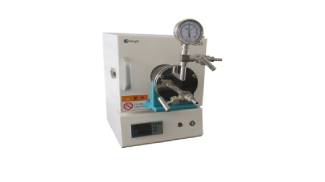Numerous thermal processing formats are available to researchers and manufacturers handling relatively small-volume samples or operations with low throughput. At these scales, benchtop laboratory ovens tend to excel – yet the geometry of the thermal processing chamber can be a limiting factor in certain application areas.
Research and development (R&D) into the generation of fine ceramic filaments led to the very first cylindrical heating chambers in the early 20th Century, and the tube furnace has since become a common sight on factory floors and in materials laboratories worldwide.
In this blog post, muffle furnace manufacturer explores when to use a tube furnace in more detail.
The eponymous component in a tube furnace is the heating chamber. This is comprised of a circular furnace wall made of high-temperature ceramic; either formed from a full cylindrical element or two semi-cylindrical elements that close to form a single void. Refractory heating coils or ribbons are embedded into the ceramic to surround a central chamber with uniformly distributed heaters. This architecture guarantees the highest possible thermal uniformity for processing both inorganic and organic compounds.
Split Tube Furnaces: A split tube furnace is a staple for academic facilities and R&D applications, consisting of a hinged body that opens in half to facilitate easy access to the internal chamber.
Solid Tube Furnaces: A solid tube furnace does not open, either vertically or lengthwise. They utilize a process tube that passes through a fixed heating cylinder; a configuration that is ideal for applications where batches are developed to repeated sample sizes.

Electric Muffle Furnace
Tube furnaces are used for a broad range of thermal processes, including inorganic and organic purification; accelerated aging; annealing; coating; drying; and much more. As a result, they have proven integral in a broad range of heat treatment markets.
The primary reason to use a tube furnace is the unmatched thermal uniformity offered by cylindrical heaters. Components in a single-zone chamber are subjected to consistent heating values exceeding 1000°C (1832°F) across a full 360° axis, which ensures optimal distribution of heat across the full cross-section of the part. This makes tube furnaces ideal for sensitive thermal processing applications, such as thermocouple calibration.
Electric muffle furnace can also be integrated with multiple heating zones to elevate the processing capabilities of the instrument. This allows a fully-controllable temperature gradient to finely-tune the heat-up and cool-down stages of thermal processing. It can also limit peak temperatures to specific areas of interest on a part – typically the central section, which leaves either end safe to handle with additional machinery. This is useful in a range of materials testing applications, enabling accurate characterizations of material mechanical properties at elevated temperatures.
If you would like to learn more about the various accessories, controls, and additional mechanical alterations we can make to our standard range of tube furnaces, simply contact us today.
Enter your email to receive the latest information about Chengyi
Copyright © Henan Chengyi Equipment Science and Technology Co.,Ltd.
All Rights Reserved | Sitemap